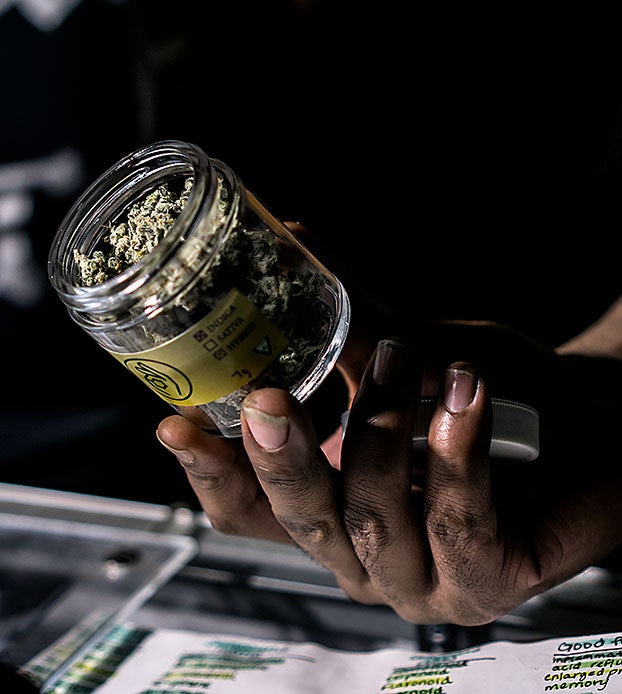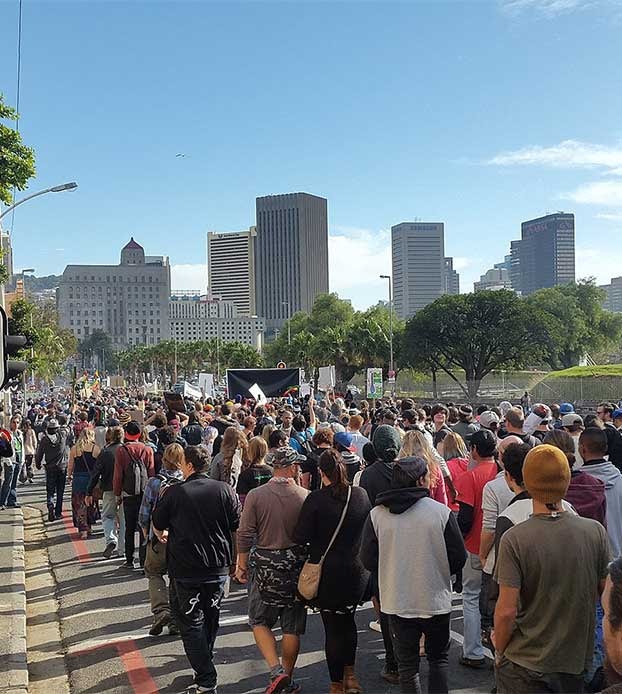An unknown number of recovered COVID-19 patients are walking through a fog, uncertain when it will end and what can be done to help. And to make things worse, most of these people were already told that they were “healed.”
The condition, known as “long COVID” — with patients often referred to as “COVID long haulers” — is typified by a series of symptoms that linger long after someone has recovered from COVID-19, even months after they no longer test positive for the novel coronavirus.
Amid the uncertainty and mystery surrounding long COVID, many long haulers are exploring their own methods to treat the symptoms of the condition.
Considering what we do and don’t know, it would be remiss to not ask whether cannabis has the potential to provide relief. While the research doesn’t provide any clear answers, here is what we do know.
What is long COVID?
The Centers for Disease Control and Prevention describes long COVID as “a range of symptoms that can last weeks or months after first being infected with the virus that causes COVID-19 or can appear weeks after infection.”
The CDC states that long COVID can happen to anyone who has had COVID-19, even if they didn’t experience any symptoms of the illness.
How common is long COVID? Scientists are still not sure, but one study carried out in Italy in 2020 found that out of 143 patients who had recovered from COVID-19, 87.4% reported persistence of at least one symptom. Over half (55%) reported having three or more symptoms of the disease two months after the onset of COVID symptoms.

The most common persistent symptom was fatigue (53.1%), followed by dyspnea (shortness of breath, 42.4%), joint pain (27.3%), and chest pain (21.7%). Of concern, nearly half (44.1%) of patients reported “worsened quality of life” even 2-3 months after battling the disease.
Furthermore, a comprehensive review published in January 2021 asserted that “it was estimated that 80% of the patients that were infected with SARS-CoV-2 developed one or more long-term symptoms.” The five most common symptoms suffered by COVID long haughers were listed as: fatigue, headache, difficulty concentrating, hair loss, and difficulty breathing.
What are the symptoms of long COVID?
The CDC lists the symptoms of long COVID as:
- Tiredness or fatigue
- Difficulty thinking or concentrating (sometimes referred to as “brain fog”)
- Headache
- Loss of smell or taste
- Dizziness on standing
- Fast-beating or pounding heart (also known as heart palpitations)
- Chest pain
- Difficulty breathing or shortness of breath
- Cough
- Joint or muscle pain
- Depression or anxiety
- Fever
- Symptoms that get worse after physical or mental activities
Because COVID is still so new, there are no studies in humans showing the utility cannabis to treat COVID or alleviate the symptoms of long COVID. And while not all of these symptoms can be treated with cannabis, here is what the research can tell us about the effectiveness of medical cannabis in treating four of the most common symptoms of long COVID.
Headaches
Headaches can be a symptom of COVID-19 and they can linger for many months for COVID-19 long haulers. The headaches have been described as episodic or an all-day “daily persistent headache.”
Cannabis has long been used as a treatment for all types of headaches and migraines, and was “highly esteemed as a headache remedy” by prominent physicians as far back as the 19th century.
Some clinical research has suggested that cannabis can be effective in treating cluster headaches and migraines, including a 2016 study that found that with daily cannabis use, migraine frequency decreased from 10.4 to 4.6 episodes per month.
A review published in 2015 found that the existing research “suggests a role for medicinal cannabis and cannabinoids in several types of headache didsocreders including migraine and cluster headache.”
Pain
Joint and muscle pain and a general soreness in many parts of the body is a common symptom reported by people with long COVID.
Chronic pain is one of the most common medical conditions patients treat with cannabis. According to a 2019 study, chronic pain was listed as the qualifying condition by 67.5% of medical cannabis patients in 2016, making it “by far the most currently and historically prevalent patient-reported qualifying condition.”
A series of studies carried out over the past decade have attested to the potential benefits of medical cannabis in chronic pain treatment.
For instance, a 2016 study found that medical cannabis improved the pain symptom and pain severity scores among 176 patients with chronic pain, and corresponded with a significant decrease in opioid consumption.
In addition, a 2015 study examined 79 trials and concluded that “there was moderate-quality evidence to support the use of cannabinoids for the treatment of chronic pain and spasticity.”
Depression and anxiety
For many people, long COVID can mean developing a lingering feeling of depression or anxiety. According to a study published in “The Lancet” in April, there is a 33% estimated incidence of a neurological or psychiatric diagnosis in COVID-19 patients six months after diagnosis.
An earlier study published by The Lancet in February found that “adults have an approximately double risk of being newly diagnosed with a psychiatric disorder after COVID-19 diagnosis” and that anxiety and mood disorders were the most common.
While every individual can react to cannabis differently, research can indicate its potential efficacy in treating depression and anxiety.
A 2018 study found that cannabis users perceived a 50% reduction in symptoms of depression. Other research has found that heavy cannabis use can potentially worsen or even increase the risk of developing depressive disorders.
As of 2017, anxiety was listed as one of the top five medical conditions that patients in North America used cannabis to treat. And while it’s true that cannabis can provide relief, this can be directly linked to the dose and the type of cannabis product used. Anxiety and paranoia are somewhat counterintuitively two of the most commonly reported side effects of consuming THC.
CBD has been shown to help some patients deal with anxiety and research has also shown a correlation between THC and the relief of anxiety. When treating anxiety with cannabis, it is important to pay attention to dosing, and try to find the balance between a sensation that relieves anxiety and one of greater intensity that could potentially cause anxiety and/or paranoia.
Cannabis and coping with the pandemic

The COVID-19 pandemic is shaping up to be a watershed event for the cannabis industry in North America. In the initial weeks of the pandemic in early 2020, states and provinces across the United States and Canada issued stay at home orders in order to stop the spread of the coronavirus — excerpt for essential businesses.
Medical cannabis clinics and recreational and medical cannabis dispensaries were categorized as essential services in countless jurisdictions, arguably reflecting the changing perception of cannabis in mainstream society in North America.
This is likely part of the explanation why cannabis sales records were broken across the United States in 2020 — a year in which hundreds of millions of people were suddenly out of work or working from home, socially distanced from friends, family, and colleagues, and with plenty of time to kill and anxiety, fear, and stress to alleviate.
While it’s still too early to say what causes COVID-19 symptoms to persist in the long term for some recovered patients and not others, some of the symptoms are among the most commonly treated with medical cannabis. Regardless, anyone who suspects they are suffering from long COVID should speak to their physician first if they are interested in using cannabis to treat their symptoms.
Sign up for bi-weekly updates, packed full of cannabis education, recipes, and tips. Your inbox will love it.

 Shop
Shop Support
Support
















